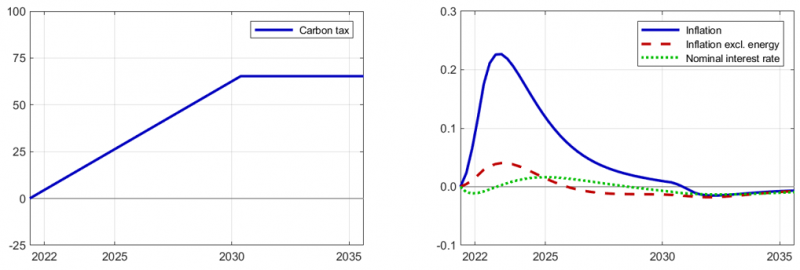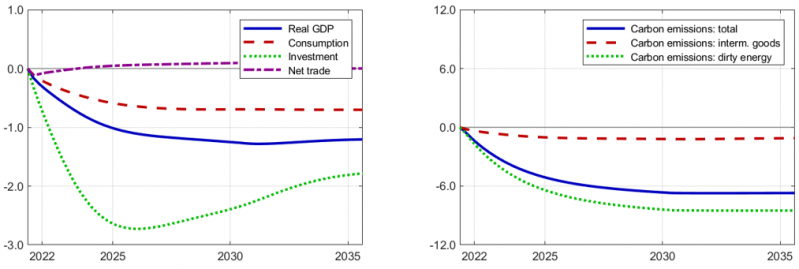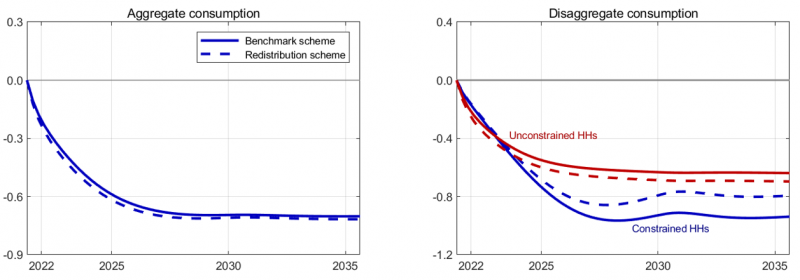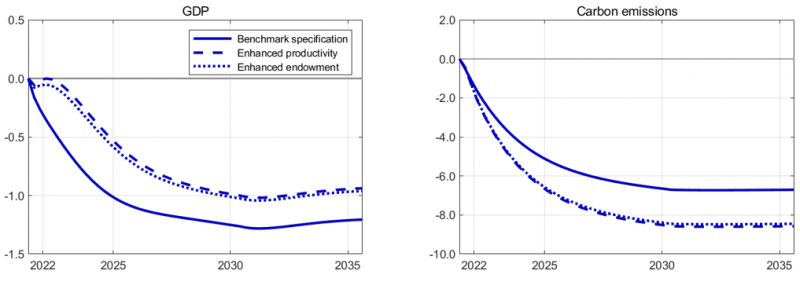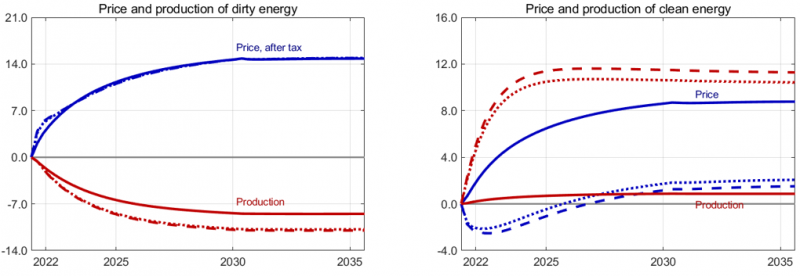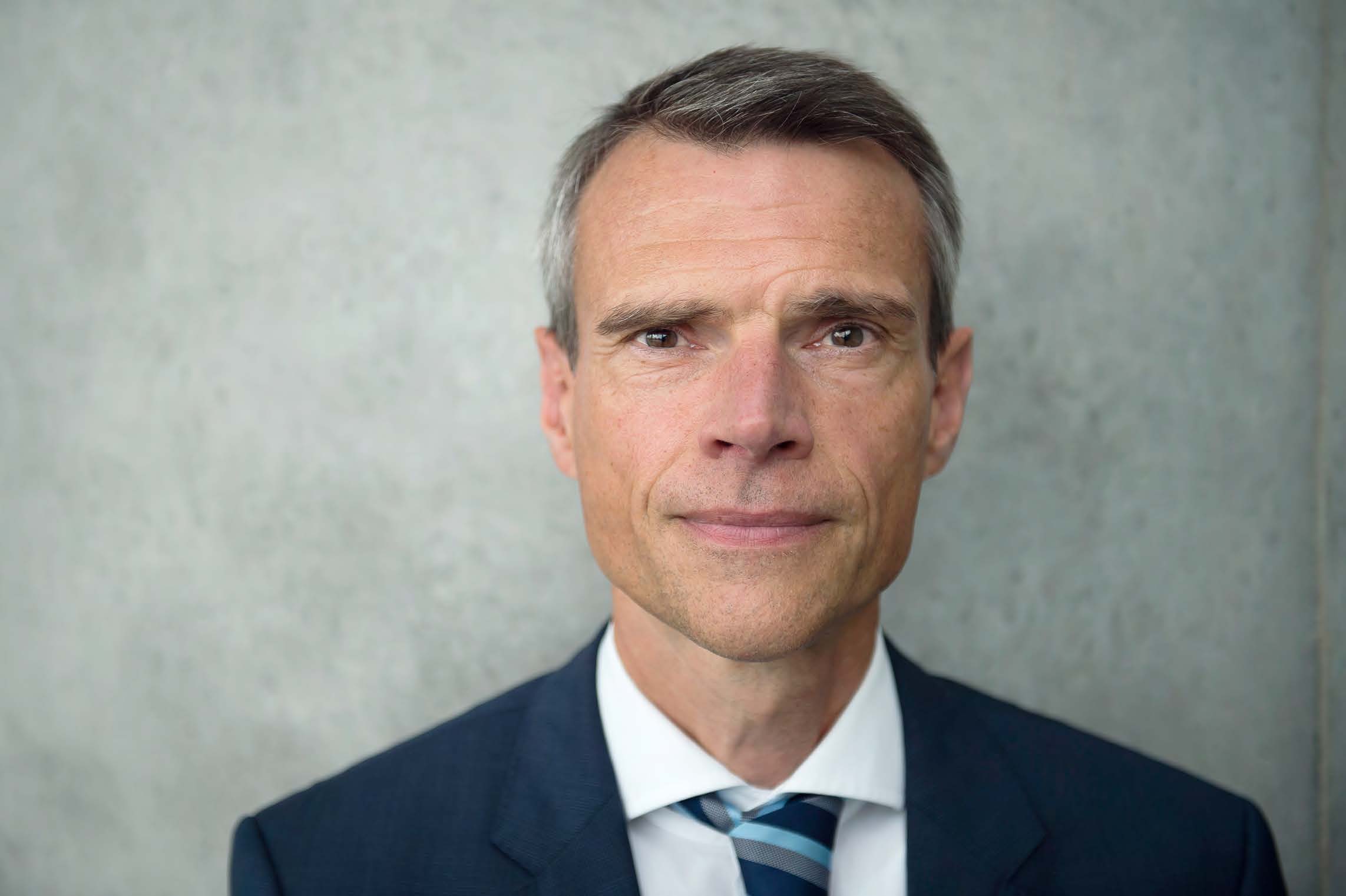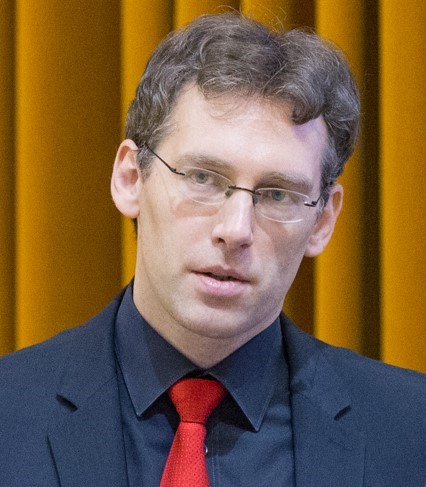References
Airaudo, F., Pappa, E. and Seoane, H., 2022, “Greenflation: The cost of the green transition in small open economies”, unpublished manuscript, Universidad Carlos III de Madrid.
Annicchiarico, B. and Di Dio, F., 2015, “Environmental policy and macroeconomic dynamics in a New Keynesian model”, Journal of Environmental Economics and Management, 69, pp. 1-21.
Bartocci, A., Notarpietro, A. and Pisani, M., 2022, “Green fiscal policy measures and non-standard monetary policy in the euro area”, Temi di Discussione 1377, Banca d’Italia.
Carton, B., Evans, C., Muir, D. and Voigts, S., 2022, “Getting to know GMMET: The theoretical structure and simulation properties of the Global Macroeconomic Model for the Energy Transition”, unpublished manuscript, International Monetary Fund.
Coenen, G., McAdam, P. and Straub, R., 2008, “Tax reform and labour-market performance in the euro area: A simulation-based analysis using the New Area-Wide Model”, Journal of Economic Dynamics and Control, 32(8), pp. 2543-2583.
Del Negro, M., di Giovanni, J. and Dogra, K., 2023, “Is the green transition inflationary?”, Staff Reports No. 1053, Federal Reserve Bank of New York.
Dupraz, S., Lisack, N., Marx, M. and Matheron, J., 2022, “Greenflation: Price stability and the decarbonization of the economy”, unpublished manuscript, Banque de France.
Ernst, A., Hinterlang, N., Mahle, A. and Stähler, N., 2022, “Carbon pricing, border adjustment and climate clubs: An assessment with EMuSe”, Discussion Papers 25/2022, Deutsche Bundesbank.
Ferrari, A. and Nispi Landi, V., 2022, “Will the green transition be inflationary? Expectations matter”, Questioni di Economia e Finanza 686, Banca d’Italia.
Heutel, G., 2012, “How should environmental policy respond to business cycles? Optimal policy under persistent productivity shocks”, Review of Economic Dynamics, 15(2), pp. 244-264.
IEA, 2022, World Energy Outlook 2022, International Energy Agency.
Känzig, D., 2021, “The unequal economic consequences of carbon pricing”, unpublished manuscript, London Business School.
Lane, P., 2022, “Inflation in the near-term and the medium-term”, opening remarks at MNI Market News Webcast, 17 February 2022.
Pisani-Ferry, J., 2021, “Climate policy is macroeconomic policy, and the implications will be significant”, Policy Briefs PB21-20, Peterson Institute for International Economics.
Priftis, R. and Schoenle, R., 2023, “Energy supply shocks and the fiscal monetary policy mix”, unpublished manuscript, European Central Bank.
Schnabel, I., 2022, “A new age of energy inflation: Climateflation, fossilflation and greenflation”, panel remarks at The ECB and its Watchers XXII conference, 17 March 2022.
Varga, J., Roeger, W. and in’t Veld, J., 2021, “E-QUEST – A multi-region sectoral dynamic general equilibrium model with energy: Model description and applications to reach the EU climate targets”, European Economy Discussion Papers 2015-146, European Commission.


